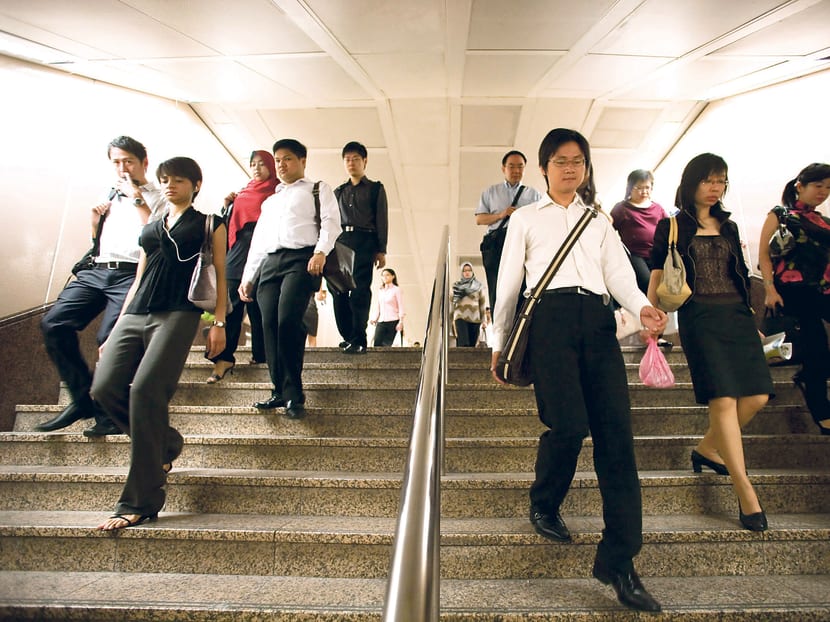Singapore economy grows 2.1% in 2015
SINGAPORE — Despite a strong fourth-quarter showing, Singapore’s economy grew last year at the weakest pace since the global financial crisis, based on advance estimates released today (Jan 4) by the Ministry of Trade and Industry (MTI).
SINGAPORE — Despite a strong fourth-quarter showing, Singapore’s economy grew last year at the weakest pace since the global financial crisis, based on advance estimates released today (Jan 4) by the Ministry of Trade and Industry (MTI).
Year-on-year, the economy grew by 2 per cent between October and December, compared to 1.8 per cent in the previous quarter. On a seasonally adjusted annualised basis, it expanded by 5.7 per cent quarter on quarter — well above the 1.7 per cent growth in the preceding quarter and the median forecast of 1 per cent growth in a Bloomberg survey.
For the whole of 2015, gross domestic product (GDP) grew by 2.1 per cent, slowing from 2.9 per cent in 2014. This is the weakest annual growth since 2009, when the economy was hit by the global financial crisis and shrank 0.6 per cent. MTI had earlier forecast full-year GDP to grow by “close to 2 per cent”.
While manufacturing remained in the doldrums, economic growth in the fourth quarter of last year was supported by public-sector construction activities, and the wholesale and retail trade as well as the finance and insurance sectors.
With no signs of external demand picking up yet, economists, however, were cautious about the outlook for the coming year despite the better-than-expected fourth quarter performance. MTI had previously tipped the economy to grow between 1 and 3 per cent this year.
Barclays senior regional economist Leong Wai Ho said: “The United States (economy) is strong but it is offset by China’s growing weakness, precipitated by a weaker ability to import - thanks to the weaker Chinese yuan.”
DBS senior economist Mr Irvin Seah pointed out the risks of potential capital flight that could result from further US rate hikes and fears of further economic slowdown in China. “Growth outlook in the next six to nine months will remain tepid before an improvement in the later part of 2016,” he added.
Still, Ms Selena Ling, head of treasury research & strategy at OCBC Bank, said the latest data showed that Singapore’s economic growth has stabilised since the third quarter of last year, and this will be the trend in the first six months of this year.
MTI said the manufacturing sector contracted in the fourth quarter of last year by 6 per cent on a year-on-year, weighed down by a decline in the output of the electronics, transport engineering and precision engineering clusters.
The economists noted that the 4.8 per cent contraction in manufacturing for the whole of 2015 was the worst performance since 2001.
UOB economist Francis Tan said: “The dovish central bank actions around the world and the global disinflationary trend had resulted in a decline in Singapore’s export competitiveness, as well as the importation of global deflation onto its shores… Although Singapore’s manufacturing sector is not out of the doldrums yet, we remain optimistic that there could be some pick-up in manufacturing growth in 2016.”
The services sector, which grew 3.2 per cent in the fourth quarter last year compared to the same period in 2014, would continue to be a bright spot, the economists said. On a quarter-on-quarter basis, the sector expanded at an annualised rate of 6.5 per cent, compared to 2.9 per cent growth in the preceding quarter.
Mr Leong said: “The pickup and acceleration in wholesale trade services is sustainable and is due to the growing success of MTI’s global trader programme. However, whether trading activity can continue to offset the drag from manufacturing remains to be seen.” He was referring to a programme launched in June 2001, which allowed Singapore-based companies to enjoy a concessionary tax rate on qualifying trading income for a five-year renewable period.
On a quarter-on-quarter seasonally adjusted annualised basis, the construction sector grew 7 per cent between October and December last year, in contrast to a contraction of 4.9 per cent in the preceding quarter. Year on year, the sector grew 2.2 per cent, doubling the growth in the third quarter.
Recently completed and ongoing major public infrastructure projects include new MRT lines and extensions - such as Downtown Line 2 which opened on Dec 27 - as well as the Sentosa Gateway Tunnel.







